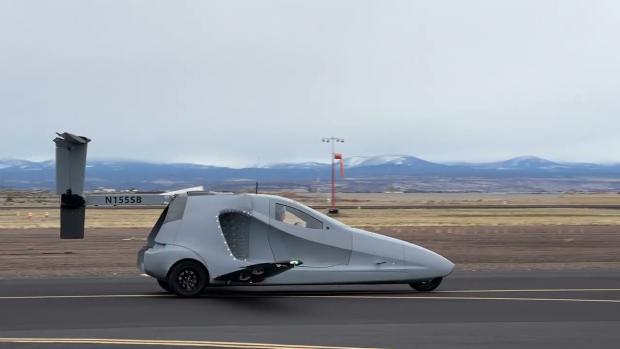
Breaking News
 Defending Against Strained Grids, Army To Power US Bases With Micro-Nuke Reactors
Defending Against Strained Grids, Army To Power US Bases With Micro-Nuke Reactors
 Pavel Durov: We're 'Running Out Of Time To Save The Free Internet'
Pavel Durov: We're 'Running Out Of Time To Save The Free Internet'
 Involving Children in Emergency Preparedness, by A.C.
Involving Children in Emergency Preparedness, by A.C.
 Catherine Austin Fitts Interview - Reverse Robin Hood: Why Has Trump Become Anti-Capitalist?
Catherine Austin Fitts Interview - Reverse Robin Hood: Why Has Trump Become Anti-Capitalist?
Top Tech News
 3D Printed Aluminum Alloy Sets Strength Record on Path to Lighter Aircraft Systems
3D Printed Aluminum Alloy Sets Strength Record on Path to Lighter Aircraft Systems
 Big Brother just got an upgrade.
Big Brother just got an upgrade.
SEMI-NEWS/SEMI-SATIRE: October 12, 2025 Edition
 Stem Cell Breakthrough for People with Parkinson's
Stem Cell Breakthrough for People with Parkinson's
 Linux Will Work For You. Time to Dump Windows 10. And Don't Bother with Windows 11
Linux Will Work For You. Time to Dump Windows 10. And Don't Bother with Windows 11
 XAI Using $18 Billion to Get 300,000 More Nvidia B200 Chips
XAI Using $18 Billion to Get 300,000 More Nvidia B200 Chips
 Immortal Monkeys? Not Quite, But Scientists Just Reversed Aging With 'Super' Stem Cells
Immortal Monkeys? Not Quite, But Scientists Just Reversed Aging With 'Super' Stem Cells
 ICE To Buy Tool That Tracks Locations Of Hundreds Of Millions Of Phones Every Day
ICE To Buy Tool That Tracks Locations Of Hundreds Of Millions Of Phones Every Day
 Yixiang 16kWh Battery For $1,920!? New Design!
Yixiang 16kWh Battery For $1,920!? New Design!
 Find a COMPATIBLE Linux Computer for $200+: Roadmap to Linux. Part 1
Find a COMPATIBLE Linux Computer for $200+: Roadmap to Linux. Part 1
Switchblade flying car gets production redesign after first flight

Based on what was learned in the course of that flight, its makers have now unveiled the design for the production version of the vehicle.
Should you be unfamiliar with the Switchblade, it's a fixed-wing flying car being developed for the civilian market by Oregon aviation company Samson Sky.
In ground mode, the three-wheeled two-seater moves along the road much like any other car, with its wings folded in beneath its body, and its tail folded into the rear. The prototype is already capable of reaching the targeted top ground speed of 125 mph (201 km/h).
Upon reaching an airport or airstrip, the Switchblade switches into flight mode. As you might have guessed, this involves folding out its wings and extending its tail. The whole process takes just three minutes.
The idea is that the vehicle will then take off and fly to another runway near its destination, just like a regular small private plane. Its hybrid power system runs on regular 91-octane gasoline, and should ultimately deliver up to 500 miles (805 km) of range from a full 36-gallon (125-l) fuel tank.
Upon landing at the destination runway, the Switchblade will retract its wings and tail, then proceed to the precise destination via the ground.
Last November, at the Grant Country International Airport in Moses Lake, Washington, the prototype made its first flight. The aircraft reached an altitude of 500 ft (152 m), and circled the area for six minutes before landing back at the airport. Plans call for it to be capable of attaining an altitude of 13,000 ft (3,962 m).
That brings us to the new design, which was guided by the performance of that test vehicle.
Most notably, the Switchblade's two rear thruster propellers now fold into the body when not in use – they were previously hard-mounted in scoops on the sides of the vehicle. According to Samson Sky, wind tunnel tests show that this and other streamlining measures should allow the aircraft to reach its targeted 160-mph (257-km/h) cruising airspeed.
The new design is also intended to make the Switchblade easier to build. This is an important consideration, as the company claims to already have approximately 2,300 reservations from buyers in 57 countries. Pricing should start at US$170,000 a pop.
"Everything we do is with the mindset of how we are going to produce thousands of Switchblades, to meet the incredible demand we have," says Samson Sky CEO, Sam Bousfield.



